Table of Contents
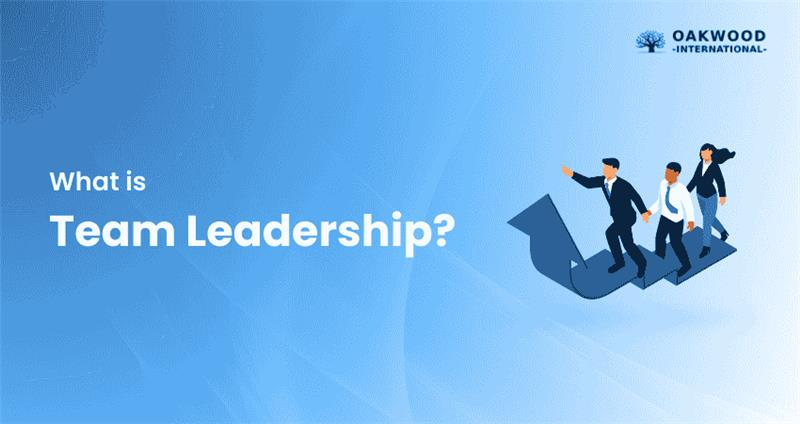

A great team leader is both the glue that holds the group together and the spark that ignites action. Team Leadership is about blending structure and inspiration, ensuring that everyone moves in the same direction while feeling empowered to contribute their best. Want to know more?
This blog takes you inside the world of Team Leadership, uncovering what it is, why it matters, and how it can shape the success of any team. Whether you’re an aspiring leader or a seasoned one, you’ll find practical insights to strengthen your Leadership journey. Keep reading!
Table of Contents
1) What is Team Leadership?
2) The Importance of Team Leadership
3) Popular Team Leadership Models
4) Essential Skills for Effective Team Leadership
5) Improve Your Leadership Skills as a New Team Leader
6) Benefits and Challenges of Strong Team Leadership
7) Conclusion
What is Team Leadership?
Team Leadership is the skill and practice of guiding, motivating, and managing a group of individuals to work together toward shared goals. It goes beyond simply assigning tasks and helps in creating a vision, inspiring commitment, and fostering a sense of unity within the team.
An effective team leader understands each member’s strengths, weaknesses, and motivations, using this insight to delegate responsibilities in a way that maximises performance. Strong communication is at the core of Team Leadership, ensuring that expectations are clear, feedback is constructive, and collaboration flows smoothly.
Key Duties of a Team Leader:
1) Build trust among team members
2) Resolve conflicts fairly and promptly
3) Maintain morale during challenging times
4) Promote accountability within the team
5) Encourage innovation and creative problem-solving
6) Align individual contributions with organisational goals
7) Ensure the team meets targets and grows stronger
The Importance of Team Leadership
Strong Team Leadership shapes the work culture, ensures team members feel valued, and drives both individual and collective success. A skilled leader inspires, connects, and empowers their team to achieve excellence. Here are some of the importances discussed below:
1) Inspiring Team Motivation and Morale
Effective leaders understand that motivated teams deliver better results. By recognising individual contributions, celebrating wins, and showing genuine care for team well-being, leaders build trust and a positive environment. This not only boosts morale but also inspires a shared sense of purpose, encouraging team members to go the extra mile.
2) Improving Communication and Teamwork
Clear, open communication is at the heart of effective teamwork. Leaders set the tone by encouraging transparency, active listening, and constructive feedback. When communication flows freely, misunderstandings are reduced, collaboration improves, and teams work together seamlessly toward shared objectives.
3) Driving Performance and Productivity
A great leader blends vision with action. They set clear expectations, provide the necessary resources, and remove roadblocks to performance. By aligning team efforts with organisational goals, they enhance productivity, foster accountability, and ensure that every task contributes to the bigger picture.
Transform your management skills – Register for ILM Level 5 Award in Leadership and Management now!
Popular Team Leadership Models
Over the years, several Leadership models have emerged to help managers and team leaders better understand how to guide, motivate, and support their teams. Each model offers unique insights into Leadership styles, adaptability, and strategies for achieving team success.
1) McGregor's XY Theory
Proposed by Douglas McGregor, this model explores two contrasting views of workforce motivation:
1) Theory X assumes employees naturally avoid work, lack ambition, and need strict supervision. Leaders adopting this view tend to use a more authoritarian style.
2) Theory Y sees employees as self-motivated, creative, and capable of responsibility. Leaders here are more likely to adopt a participative, trust-based approach.
3) The model encourages leaders to reflect on their own assumptions and adapt their style to motivate effectively.
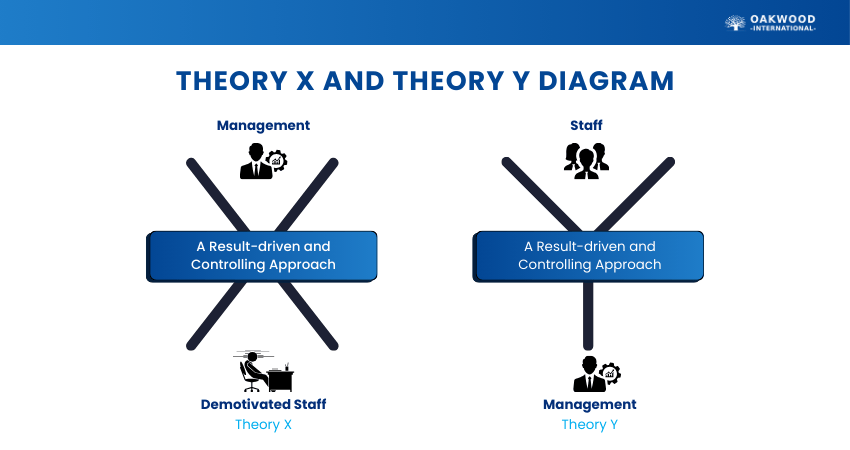
2) Situational Leadership
Developed by Paul Hersey and Ken Blanchard, Situational Leadership emphasises flexibility. The model suggests that there is no single “best” style; instead, leaders should adapt based on the maturity, competence, and commitment level of their team members.
The Four Main Styles are:
a) Directing: High task focus, low relationship focus
b) Coaching: High task and relationship focus
c) Supporting: Low task focus, high relationship focus
d) Delegating: Low task and relationship focus
This approach ensures Leadership is tailored to the specific needs of the team and situation.
3) The Six Emotional Leadership Styles
Introduced by Daniel Goleman, this model links Leadership styles to emotional intelligence. The six styles are:
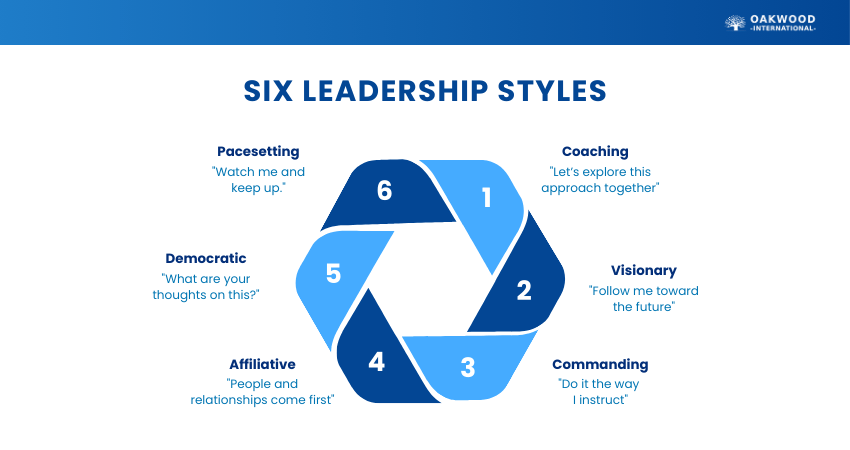
a) Visionary: Inspires by setting a clear vision
b) Coaching: Focuses on long-term development
c) Affiliative: Builds harmony and emotional bonds
d) Democratic: Values input and collaboration
e) Pacesetting: Sets high performance standards
f) Commanding: Direct and decisive, often used in crises
Effective leaders switch between these styles depending on the situation and team dynamics.
4) Action Centered Leadership (ACL) or the 'Three Circles Model'
Developed by John Adair, this model focuses on three overlapping responsibilities that leaders must balance:
a) Achieving the Task: Ensuring objectives are met on time
b) Building the Team: Creating a united, collaborative group
c) Developing the Individual: Supporting personal growth and skills
Balancing these “three circles” ensures sustainable performance, strong teamwork, and continuous improvement.
5) The Leadership Challenges
Created by James Kouzes and Barry Posner, this model is built around five core practices:
a) Model the Way: Set an example through actions and values
b) Inspire a Shared Vision: Communicate a clear and compelling future
c) Challenge the Process: Encourage innovation and continuous improvement
d) Enable Others to Act: Foster collaboration and empower team members
e) Encourage the Heart: Recognise contributions and celebrate successes
This model highlights the human side of Leadership and the importance of inspiring and empowering teams.
Essential Skills for Effective Team Leadership
Effective Team Leadership blends a range of skills that drive team growth, strengthen collaboration, and boost productivity. A strong Leadership role also involves showing empathy, practising active listening, and maintaining open, personable communication to unite the team and achieve shared goals.
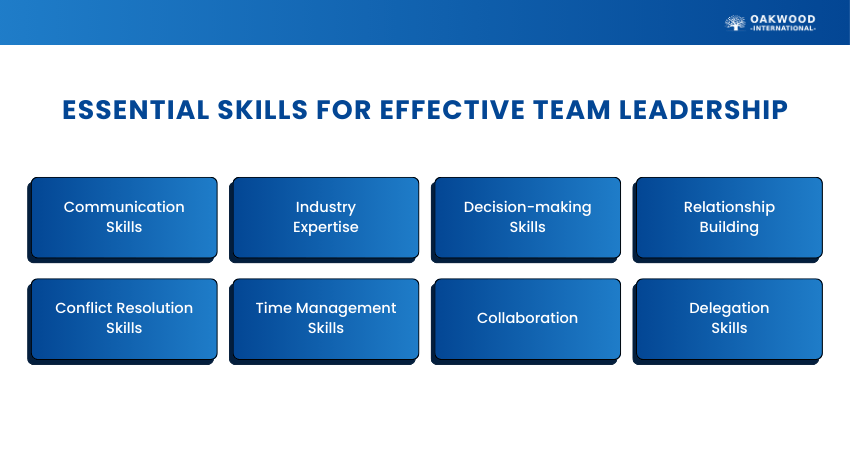
1) Communication Skills
Clear, impactful communication is at the heart of effective Leadership. It means delivering messages in a way that is concise, respectful, and persuasive, building trust and understanding within the team. By mastering these aspects, leaders create a collaborative environment and reinforce a servant Leadership approach that supports development team. Strong Communication Involves:
a) Active listening to truly understand team members’ perspectives
b) Using empathy to connect on a personal level
c) Adjusting communication style to suit different situations and personalities
2) Industry Expertise
Strong leaders understand the industry in which they operate. Knowledge of market trends, regulations, and best practices builds credibility and helps guide teams strategically. Industry expertise allows leaders to:
a) Anticipate challenges and opportunities
b) Provide relevant insights to the team
c) Align projects with industry standards and customer expectations
3) Decision-making Skills
Sound decision-making is critical for guiding a team effectively. It involves assessing situations, analysing possible outcomes, and making choices that benefit the whole group. Leaders who excel here set a positive example and encourage confidence within the team. These styles not only improve outcomes but also contribute to stronger Leadership Development overall.
a) Servant Leadership: Prioritising the needs and well-being of the team
b) Collaborative Leadership: Involving the team in the decision-making process
4) Relationship Building
Relationships are the glue that holds a team together. A leader’s ability to connect with team members on a personal and professional level creates a supportive and motivated work environment. When team members feel valued and understood, loyalty and engagement increase, driving better results. Strong relationship-building involves:
a) Recognising contributions to boost morale
b) Offering mentorship to support career growth
c) Creating trust through honesty and transparency
Become a trusted mentor – Get started by joining our ILM Level 5 Certificate in Effective Coaching and Mentoring today!
5) Conflict Resolution Skills
Conflicts can derail productivity if left unmanaged, but they can also be opportunities for growth when handled well. Leaders need to approach disputes with fairness, empathy, and a focus on solutions. By addressing issues early and respectfully, leaders maintain harmony and prevent small disagreements from escalating. Steps for effective conflict resolution:
a) Stay neutral and avoid taking sides prematurely
b) Encourage open dialogue to understand all perspectives
c) Work toward win-win outcomes that satisfy all parties
6) Time Management Skills
Time is a leader’s most valuable resource. Balancing multiple projects, deadlines, and responsibilities requires discipline and planning. Leaders who manage time effectively help teams stay organised and consistently meet targets. Time management best practices:
a) Prioritise tasks based on urgency and importance
b) Set realistic deadlines to avoid unnecessary stress
c) Model efficiency to inspire the team to follow suit
7) Collaboration
Collaboration drives innovation, problem-solving, and productivity. A collaborative leader knows how to harness the collective skills and ideas of the team. When collaboration thrives, teams become more creative, resilient, and united. Ways to promote collaboration:
a) Encourage cross-functional projects to break down silos
b) Recognise team successes to reinforce the value of working together
c) Foster psychological safety so everyone feels comfortable contributing ideas
8) Delegation Skills
Delegation is about empowerment, not just workload distribution. A good leader delegates with purpose, ensuring tasks are assigned to the right people with clear expectations. Delegation frees leaders to focus on strategic priorities while helping team members develop new skills and take ownership of their work. Effective delegation includes:
a) Matching tasks to individual strengths
b) Providing clear instructions and measurable goals
c) Offering support without micromanaging
Improve Your Leadership Skills as a New Team Leader
Developing strong Leadership habits early will set the tone for your career and help you earn respect and trust from your colleagues. Below are eight practical ways to grow your Leadership skills as a new team leader.
1) Be Innovative
Innovation is about being open to fresh ideas and creative solutions. As a new leader, encourage brainstorming sessions, explore alternative processes, and be willing to adapt when challenges arise. Embracing innovation shows your team you are forward-thinking and ready to lead them into new opportunities rather than sticking rigidly to outdated methods.
Tip: Allocate time for “idea-sharing” meetings where no suggestion is dismissed outright, this encourages creativity and problem-solving.
2) Lead by Example
Your team will look to you for guidance on how to behave and perform. Displaying integrity, accountability, and a strong work ethic sets the standard for others to follow. Whether it’s meeting deadlines, treating others respectfully, or maintaining professionalism, demonstrating these behaviours will inspire your team to match your commitment and attitude.
Tip: Consistently model punctuality, transparency, and ethical decision-making; actions speak louder than instructions.
3) Receive Mentorship
No leader succeeds entirely on their own. Seeking mentorship from experienced professionals can give you valuable insights, constructive feedback, and encouragement. A mentor can help you navigate difficult decisions, avoid common Leadership mistakes, and accelerate your growth by sharing lessons from their own experiences.
Tip: Schedule regular check-ins with your mentor and come prepared with specific challenges or questions to get targeted advice.
4) Encourage Feedback
Inviting feedback from your team, peers, and managers demonstrates humility and a willingness to grow. Constructive feedback can highlight blind spots you might not notice on your own. Encourage open dialogue by asking specific questions and creating a safe space where team members feel comfortable sharing their honest opinions.
Tip: Use anonymous surveys or suggestion boxes to gather honest feedback without putting pressure on individuals.
5) Define your Leadership Style
Different situations call for different Leadership approaches, but having a clear sense of your natural style helps you lead more authentically. Reflect on whether you’re more collaborative, authoritative, coaching-oriented, or a mix of styles. Knowing your strengths and limitations will guide your decision-making and help you adapt effectively to your team’s needs.
Tip: Take a Leadership style assessment and compare results with peer feedback to get a well-rounded view.
6) Demonstrate your Commitment
A committed leader shows dedication not only to achieving organisational goals but also to the success of each team member. Be willing to pitch in during high-pressure situations, provide ongoing support, and follow through on promises. Your actions will reinforce your reliability and dedication, motivating your team to give their best effort.
Tip: Set quarterly goals for yourself and your team, then review progress together to reinforce mutual accountability.
Turn potential into performance - Start your coaching journey with our ILM Level 5 Diploma in Effective Coaching and Mentoring now!
7) Show Appreciation for your Team
Recognition is one of the most powerful motivators. Regularly acknowledge both individual and group achievements, whether through verbal praise, written notes, or team celebrations. When people feel valued, they are more engaged, loyal, and motivated to contribute to the team’s success.
Tip: Keep a “team wins” board physical or digital to showcase recent achievements and boost morale.
8) Apply What you have Learned
Leadership is a continuous learning process. Take the lessons from mentorship, feedback, and personal experience, and put them into practice. Applying what you’ve learned shows your team you’re adaptable and committed to self-improvement. Over time, this will build your credibility as a leader who grows alongside the team.
Tip: After implementing a new Leadership approach, follow up with the team to gather feedback on its effectiveness.
Benefits and Challenges of Strong Team Leadership
Strong Team Leadership offers clear advantages but also comes with its share of challenges. The table below highlights the key benefits that effective Leadership brings to a team, alongside the common obstacles leaders must navigate to maintain performance and harmony.
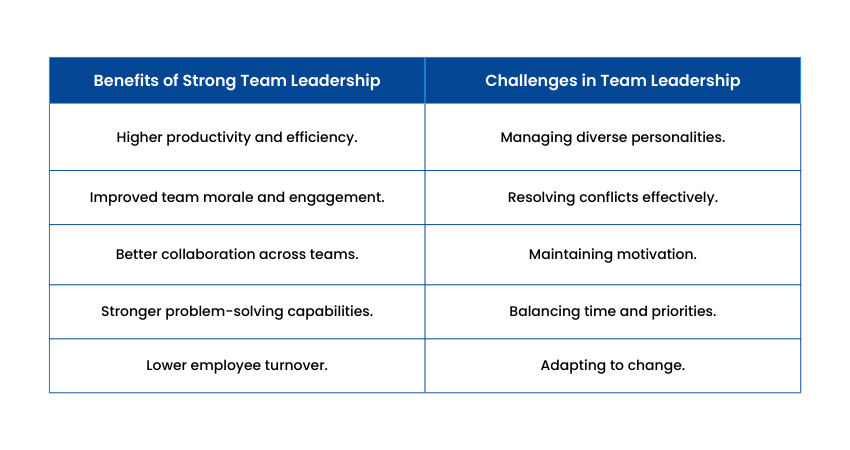
Benefits
Strong Team Leadership creates a foundation for success by aligning people, processes, and goals. It boosts productivity, builds trust, and fosters a positive work environment where individuals feel valued and motivated to perform at their best.
Key Benefits Include:
1) Higher Productivity: Clear guidance and well-organised workflows keep teams efficient and focused.
2) Improved Morale: Recognition, support, and open communication increase engagement and job satisfaction.
3) Better Collaboration: A leader who promotes teamwork ensures smoother cooperation across departments.
4) Stronger Problem-solving: Empowered teams can address challenges creatively and effectively.
5) Lower Turnover: Employees are more likely to stay when Leadership is supportive and inspiring.
Challenges
While rewarding, leading a team comes with obstacles that test a leader’s skills and adaptability. Recognising these challenges early allows leaders to address them proactively.
Common Challenges Include:
1) Diverse Personalities: Balancing different work styles, communication preferences, and attitudes.
2) Conflict Management: Resolving disputes without damaging relationships or morale.
3) Maintaining Motivation: Sustaining enthusiasm during high-pressure or repetitive tasks.
4) Time Management: Balancing Leadership duties with administrative and strategic responsibilities.
5) Adapting to Change: Guiding the team through organisational shifts or unexpected challenges.
Conclusion
Team Leadership is about inspiring, guiding, and empowering people to work toward shared goals. By mastering communication, building trust, and fostering collaboration, leaders create teams that thrive. Strong Leadership transforms potential into performance, ensuring both individual growth and collective success in any organisation or project.
Advance your career - Become the leader your team deserves with our ILM Level 5 Training today!


 Back
Back



 Back to Catagories
Back to Catagories





 + 44 7452 122728
+ 44 7452 122728










